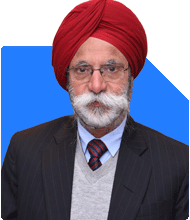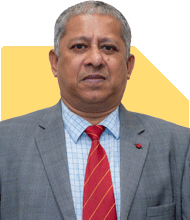Hi Sir
My name gaurav. My age is 38.
My EPF amount is 40 lakhs, company NPS is 14 lacks. I have stocks worth of 35 lakhs. I have invested 18 lacks in mutual funds.
I am continuously investing 10000 rs/ month for my first child since 4 years and 10000 rs/ month for my second child since 3 year in mutual fund. Plus I have also taken pension plan for my self which is 15000 rs/ month since 4 year. I have invested 10 lakhs in FD.
Can I take early retirement at the age of 45. Pl tell me. I have no load liabilities and I have my own house
Ans: Hello Gaurav,
First, let me commend you on your impressive financial planning. You have accumulated a substantial corpus through various investments and have thoughtfully planned for your children’s future. Your diligent efforts and foresight are commendable. Now, let's explore whether you can take early retirement at the age of 45, considering your current financial situation and future goals.
Understanding Your Current Financial Status
You have a diversified portfolio comprising EPF, NPS, stocks, mutual funds, and fixed deposits. Let's break down each of these:
EPF: Rs 40 lakhs
NPS: Rs 14 lakhs
Stocks: Rs 35 lakhs
Mutual Funds: Rs 18 lakhs
Monthly SIP for Children: Rs 10,000 each (for 4 years and 3 years)
Pension Plan: Rs 15,000 per month (for 4 years)
Fixed Deposit: Rs 10 lakhs
No liabilities: You own your house
These investments are well-distributed across various asset classes, providing a good mix of growth and stability.
Evaluating Your Retirement Goal
Retiring at 45 means you have seven years to grow your current investments. Post-retirement, you will need to sustain your lifestyle without a regular salary. Let's examine your readiness for early retirement by analyzing the following factors:
Estimating Post-Retirement Expenses
Basic Living Expenses: Calculate your monthly and annual living expenses. Consider inflation and lifestyle changes post-retirement.
Healthcare Costs: These tend to increase with age. Ensure you have adequate health insurance coverage.
Children’s Education and Marriage: Plan for your children’s higher education and marriage expenses.
Travel and Leisure: Retirement often brings the desire to travel and pursue hobbies. Budget for these activities.
Analyzing Your Investment Portfolio
EPF (Employees’ Provident Fund)
EPF is a secure and tax-efficient investment. The interest is compounded annually, making it a powerful tool for long-term savings. However, it is primarily a retirement-oriented investment, and premature withdrawal can result in tax implications and loss of compounding benefits.
NPS (National Pension System)
NPS is a good retirement planning tool due to its tax benefits and market-linked returns. It provides a mix of equity and debt exposure. However, a portion of the corpus must be used to purchase an annuity, which may not be ideal for early retirement as it reduces immediate liquidity.
Stocks
Your investment in stocks is commendable as it offers significant growth potential. However, the stock market is volatile. It’s crucial to regularly review and rebalance your portfolio to mitigate risks.
Mutual Funds
Mutual funds provide diversification and professional management. Your ongoing SIPs are beneficial as they instill investment discipline and leverage the power of rupee cost averaging.
Fixed Deposits
FDs offer safety and guaranteed returns but usually provide lower returns compared to other investment options. They should be part of your portfolio to ensure liquidity and stability.
Pension Plan
Your pension plan is another pillar of your retirement planning. It’s essential to understand the plan’s payout structure and ensure it aligns with your post-retirement needs.
Advantages of Mutual Funds
Diversification: Mutual funds invest in a diversified portfolio, reducing risk.
Professional Management: Expert fund managers handle investments.
Liquidity: Easy to buy and sell, providing flexibility.
Power of Compounding: Reinvested returns generate more returns, accelerating wealth accumulation.
Risks of Mutual Funds
Market Risk: Equity funds are subject to market fluctuations.
Credit Risk: Debt funds carry the risk of default by issuers.
Liquidity Risk: Certain funds might face liquidity issues during market downturns.
The Power of Compounding
Compounding allows your returns to generate further returns, significantly boosting your wealth over time. Starting early and staying invested are crucial to harnessing its full potential.
Assessing Your Monthly Investments
You are investing Rs 10,000 each for your two children in mutual funds and Rs 15,000 in a pension plan. These consistent investments are building a substantial corpus for their future and your retirement.
Children's Education Fund
Your current investments will grow significantly by the time your children need funds for higher education. Continue monitoring and adjusting the SIP amounts as needed based on their future needs.
Retirement Corpus Calculation
Current Investments: Total of EPF, NPS, stocks, mutual funds, FD.
Future Value: Estimate the future value of these investments considering the compounding effect and expected returns.
Monthly Withdrawal: Determine the monthly amount required to maintain your lifestyle post-retirement.
Withdrawal Rate: Ensure a sustainable withdrawal rate to avoid depleting your corpus too soon.
Steps to Ensure a Smooth Early Retirement
Continue Investing: Maintain your SIPs and pension contributions.
Increase Contributions: Gradually increase your monthly SIPs if possible.
Diversify Portfolio: Regularly rebalance your portfolio to maintain an optimal mix of assets.
Build an Emergency Fund: Set aside funds to cover unexpected expenses.
Review Insurance: Ensure adequate health and life insurance coverage.
Debt-Free: Remain free from liabilities to reduce financial stress.
Seeking Professional Guidance
Consulting a Certified Financial Planner can provide personalized advice and help you make informed decisions. They can assist in:
Holistic Planning: Consider all aspects of your financial situation.
Tailored Strategy: Develop a strategy that aligns with your goals.
Risk Management: Identify and mitigate potential risks.
Final Insights
Gaurav, your current financial status is impressive. You have diversified investments and no liabilities, which is a strong foundation for early retirement. However, retiring at 45 requires careful planning and disciplined execution.
Plan Meticulously: Detailed planning is crucial to ensure financial security.
Stay Informed: Regularly update yourself on market trends and investment options.
Be Flexible: Be prepared to adjust your plans based on changing circumstances.
Seek Help: Professional guidance can significantly enhance your planning and execution.
Best Regards,
K. Ramalingam, MBA, CFP
Chief Financial Planner,
www.holisticinvestment.in


























